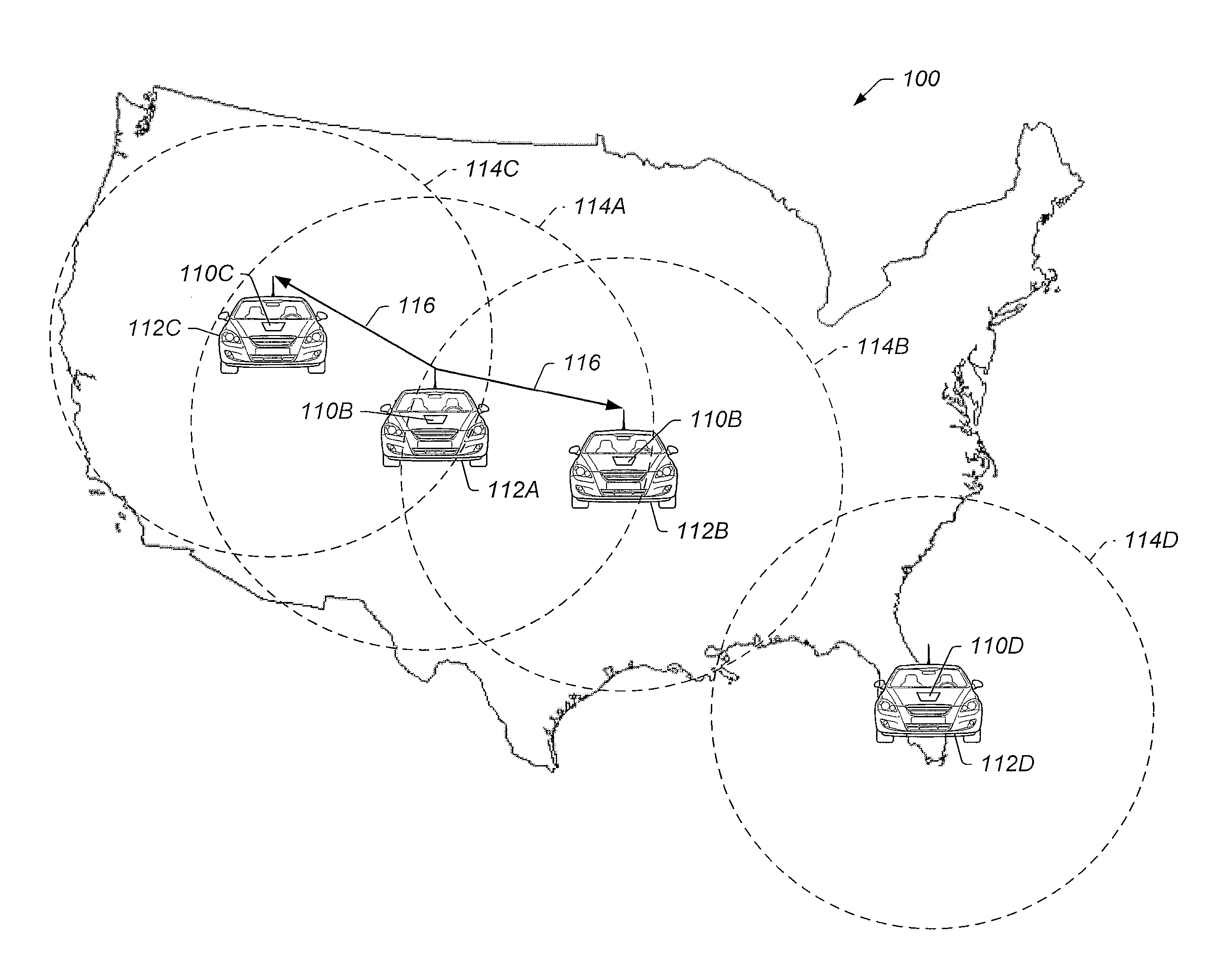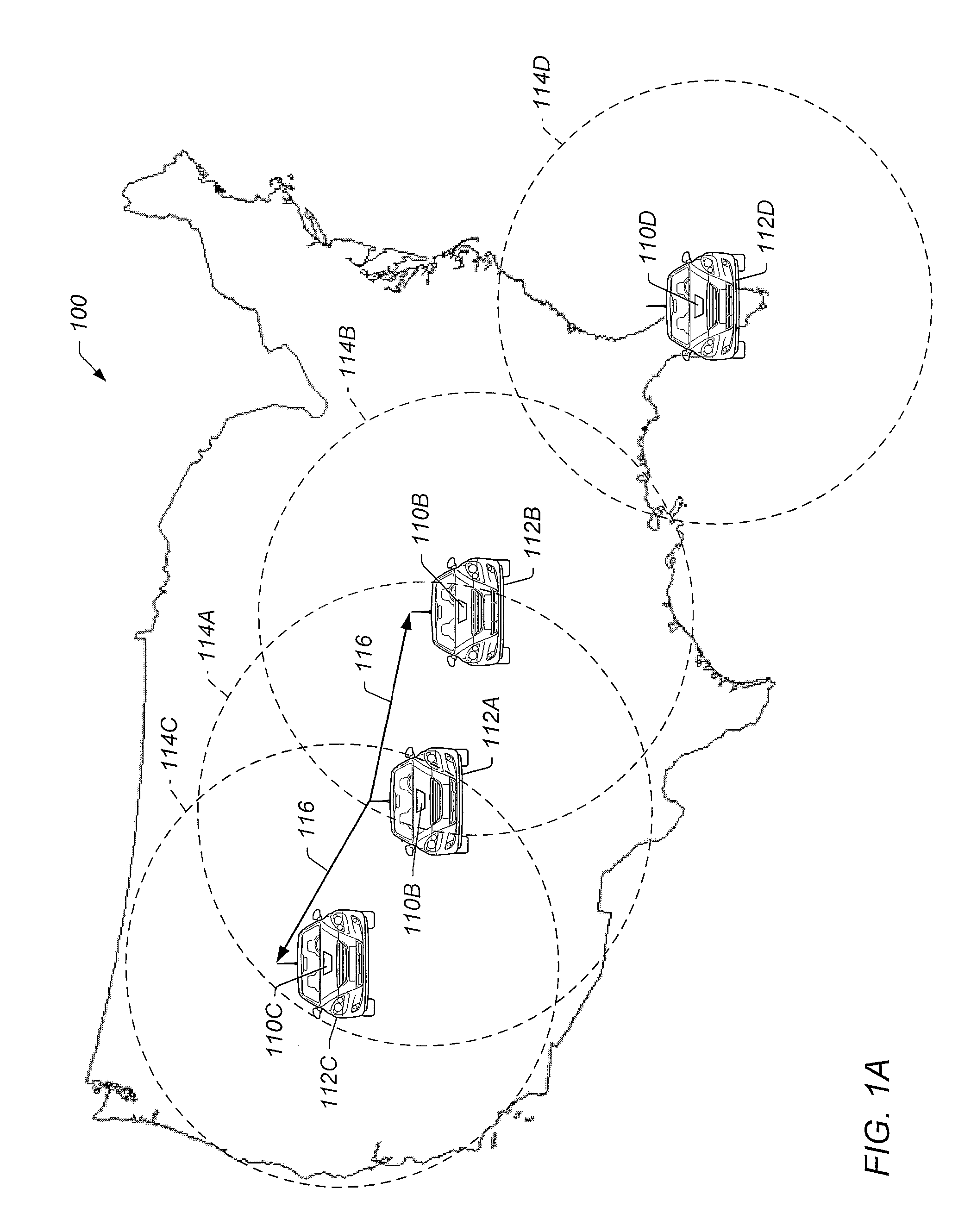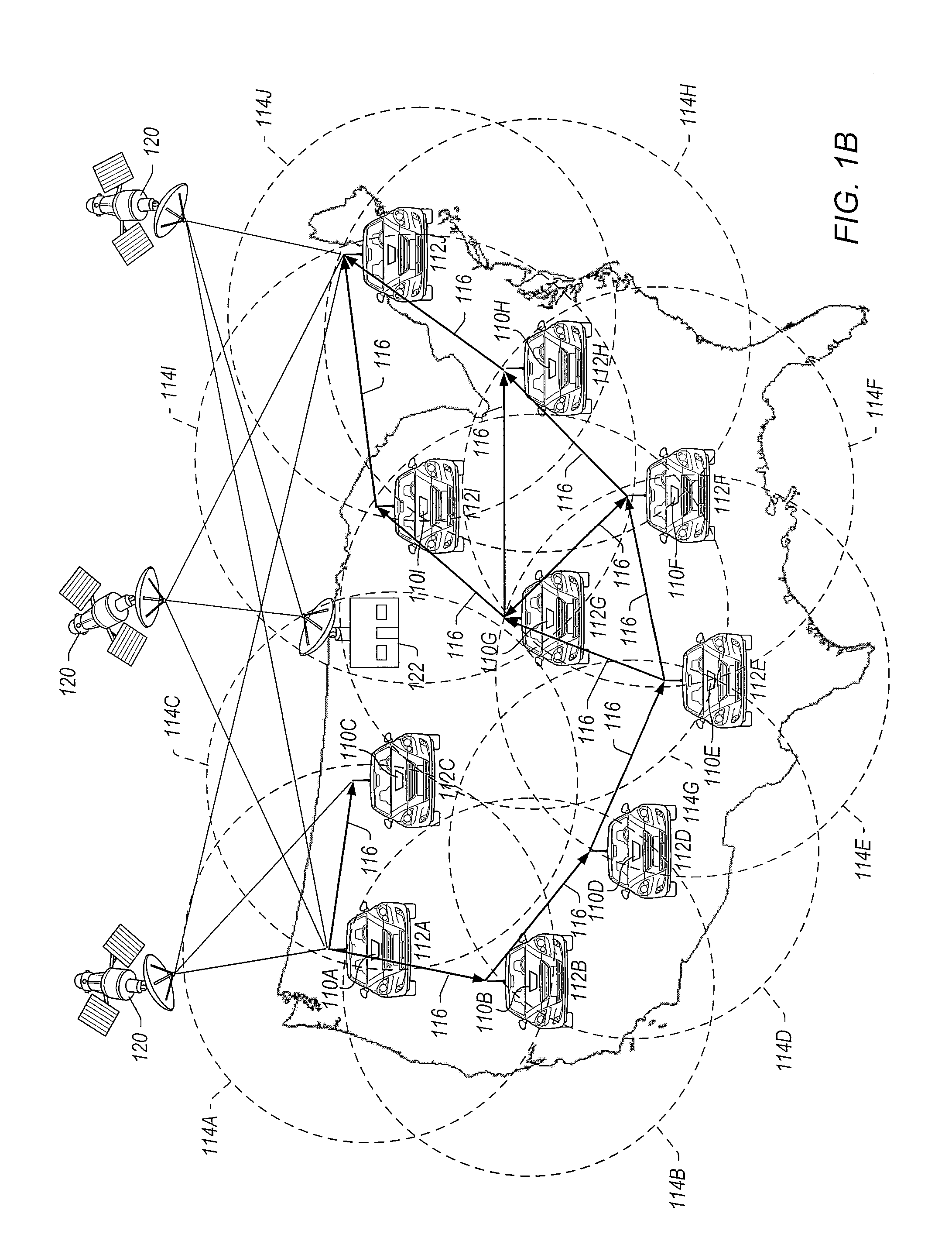Wireless communication system and method
a wireless communication and wireless communication technology, applied in the field of wireless vehicle-to-vehicle communication, can solve the problems of complicated data transmission, data communication may not be secure, users are at risk of receiving unwanted messages,
- Summary
- Abstract
- Description
- Claims
- Application Information
AI Technical Summary
Benefits of technology
Problems solved by technology
Method used
Image
Examples
Embodiment Construction
[0025]As discussed in more detail below, certain embodiments of the present technique include a system and method for communication between occupants and / or devices of different vehicles, otherwise referred to herein as “inter-vehicle communication.” In some embodiments, an inter-vehicle communication system includes a plurality of vehicle communication devices configured to transmit data between one another. Certain embodiments may include registration of a vehicle communication device before it is activated and useable on an inter-vehicle communication network. Registration may include associating a license plate number, or similar identification feature, with the registered vehicle communication device. In certain embodiments, the transmission of data may be provided via direct communication between two of the communication devices, e.g., a source communication device and a destination communication device. The source device may include a communication device that is generating / s...
PUM
 Login to View More
Login to View More Abstract
Description
Claims
Application Information
 Login to View More
Login to View More - R&D
- Intellectual Property
- Life Sciences
- Materials
- Tech Scout
- Unparalleled Data Quality
- Higher Quality Content
- 60% Fewer Hallucinations
Browse by: Latest US Patents, China's latest patents, Technical Efficacy Thesaurus, Application Domain, Technology Topic, Popular Technical Reports.
© 2025 PatSnap. All rights reserved.Legal|Privacy policy|Modern Slavery Act Transparency Statement|Sitemap|About US| Contact US: help@patsnap.com



